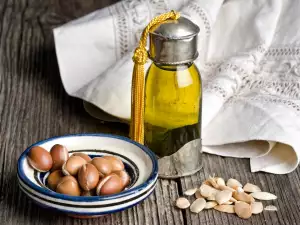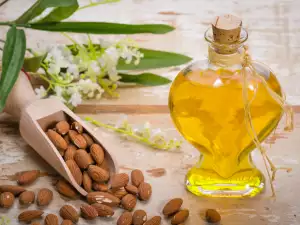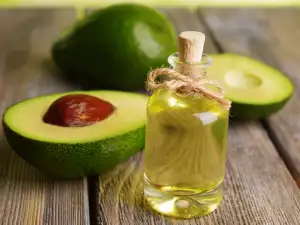Castor oil is a product that is extracted from the seeds of the Ricinus communis plant, also known as the tick because its Latin name, which translates to just tick. It is of the Euphorbiaceae family, was a major representative of the Ricin genus. Many experts believe that it is the only member of the genus.
Castor beans are called "ticks" because the shape of the seeds and a tick drunk with blood are highly similar. The plant originates from East Africa, where it is cultivated since ancient times. Today it is grown as technical culture in all corners of the world with temperatures useful for castor oil. It has a lot of side applications, recently moving into the production of biodiesel.
Cultivation of castor beans started from time immemorial, and evidence of its use was found even in Egyptian tombs around 4000 BC. Castor oil had been used for lighting. Even Herodotus mentions a castor bean as "Kiki" and claimed that it’s homeland is precisely Egypt. Information on how you the castor oil for lighting comes from Strabo - put it in oil lamps and ointments.
Detailed description of the plant itself give Theophrastus and Dioscorides, the last of which gives detailed information about the process for extracting the oil and its use as a laxative. With its reputation as a strong laxative, castor oil earned a place in the writings of Pliny.
People in ancient Rome knew the castor bean tree under the name of Christ or the Palm of Christ , a nick namewhich has remained in place to this day. This plant has been known for its beneficial properties even Indian tribes in Guyana used it externally after a prolonged illness with fever. Of course back then people knew the poisonous force of the castor bean.
Except as technical culture, it is often used as an ornamental plant because its colors are very beautiful, colored, colors - violet, black, red, green, the color of bronze, etc. As a decorative plant, it was used extensively in Bulgaria until the mid 30s of last century. Then it started to be grown as an oilseed crop and its size reached 100, 000 hectares in the mid 50s.
Composition of castor oil
This is poisonous plant that kills all farm animals which have eaten it. Ricin poisoning is very serious, defeating all organ systems of animals. Toxic substances in the plant are the toxic protein ricin and the alkaloid ricinin. The seeds of the castor bean, however, contain between 45-60% castor oil. Outwardly, the seeds resemble beans, but there are substantial differences. Eating castor seeds leads to severe poisoning.
Use of castor oil
Internally, castor oil is used mainly as a laxative. Its use must be very careful and according to package directions, because otherwise, there may be side effects and reactions.
Directions for use:
Adults’ internal intake is 1-2 tablespoons day (15-30 g), and for children over 6 years old - 1-3 teaspoons daily. To soften the taste of castor oil, you may eat it with fruit juice or sweetened with a little honey or sugar drinks like coffee and tea. The combination of honey should be in a 1:1 ratio. You can treat the oil directly onto the back half of the tongue. The laxative effect of castor oil occurs in about 2-6 hours.
Benefits of Castor Oil
Castor oil has proven anti-inflammatory, pain relieving, antiviral and antibacterial properties. It has a laxative purgative action of the body and at the same time strengthens the immune system. With castor oil, you can banish constipation . For children, the recommended dose is from a few drops to 1 teaspoon daily for a period not longer than three days. In lazy bowel treatment can be repeated after a few days rest. When using it, adults also need to have a break for a few days before re-taking castor oil after the first session.
To banish flu and colds , mix 1 ts castor oil with 10 drops of peppermint or lavender. Pouring a few drops on the tongue and allow it to dissolve in saliva, then you can swallow. Repeat several times for one day. Even hay fever can get better with castor oil every morning by pouring 1 drop in each nostril and 2-3 drops on the tongue. Hold for one minute and swallow. The same scheme can be a positive influence and infectious nasopharyngitis.
If you have pain in the joints, especially the hands and feet, treat affected areas of the skin with warm castor oil in the morning and evening with light massage movements. Coated feet with castor oil, cover with warm socks from natural materials and sleep with them. Massage your spine with this oil, and then go to bed wearing a wooly shirt.
Castor oil has proven useful in conjunctivitis (one drop in each eye at bedtime). The oil is known for healing warts, they will respond well. Mix castor oil and propolis (ts, 1) and apply with a bandage. Allow the deletion of the wart.
Castor oil can help if you have otitis introduce a few drops of slightly warmed castor oil in the ear canal and seal with a pad. Gently massage your neck in the direction from the bottom to the ear, which will facilitate the flow of that lymph. The Oil is useful for hemorrhoids as it is made to compresses, which are left on overnight.
Beauty with castor oil
Along with health benefits castor oil can help to keep the beautiful appearance of your skin, hair and nails . As already mentioned, rubbing castor oil on warts helps clear them. The same goes for festering wounds and other irritated areas on the skin. Castor oil can be used to treat the navel of a newborn who does not want to go fast. To prevent skin dryness in winter, mix 10 drops of castor oil with one egg yolk and apply a thin layer on face. Leave on for 15 minutes and remove with a decoction of chamomile.
If you include castor oil in hair masks, the positive effect is uncertain. You can only apply the oil directly on the scalp as a rub before bed at night, 2 times in 1 week. In the morning, flush the oil from your head and hair with a mild shampoo. You can relieve calluses and various wounds with castor oil. Castor oil removes age spots on the skin and hands. It works quite well on cracked heels , applied two times a week before bed. Treat your eyelashes and eyebrows with a small amount of castor oil if you want to make them thicker and have healthy-looking hair.
Dangers of castor oil
The use of castor oil should be controlled and moderate, especially if used as a laxative. With continuous use, the oil can cause loose bowels and lead to addiction. Do not take castor oil-soluble substances (benzene, phosphorus compounds, etc..). Do not apply oil to bleeding hemorrhoids, peritonitis , appendicitis , ulcerative colitis, acute cholecyctitis , constipation due to mechanical obstructions such as ileus, hernia, etc.
Do not use castor oil during your monthly menstrual period, in high temperature , in chronic constipation and jaundice in chronic constipation and acute and chronic kidney disease . If you have stomach pain or are feeling sick , do not take castor oil, unless directed by a doctor. Castor oil is retained in the body absorption of fat-soluble vitamins.
Adverse reactions
The internal use of castor oil can cause allergic reactions to occur. In addition, the continued intake of the product can cause the body to get used to it, castor oil can cause nausea , vomiting, pain and Colicky very severe diarrhea. If a larger dose of oil contact with the eyes, is very likely to cause irritation.




















Comments
This is wrong, for castor oil works not directly like all the other laxatives by irritating the bowels, but indirectly by activating and synthethizing certain substances of the human body. So it will never be possible that the human body will be habituated to castor oil. Even after dcades swallowing a good dose castor oil (for adults 2 oz) will cleanse your bowels totally.